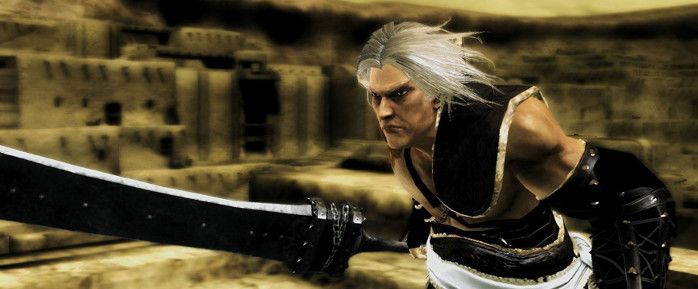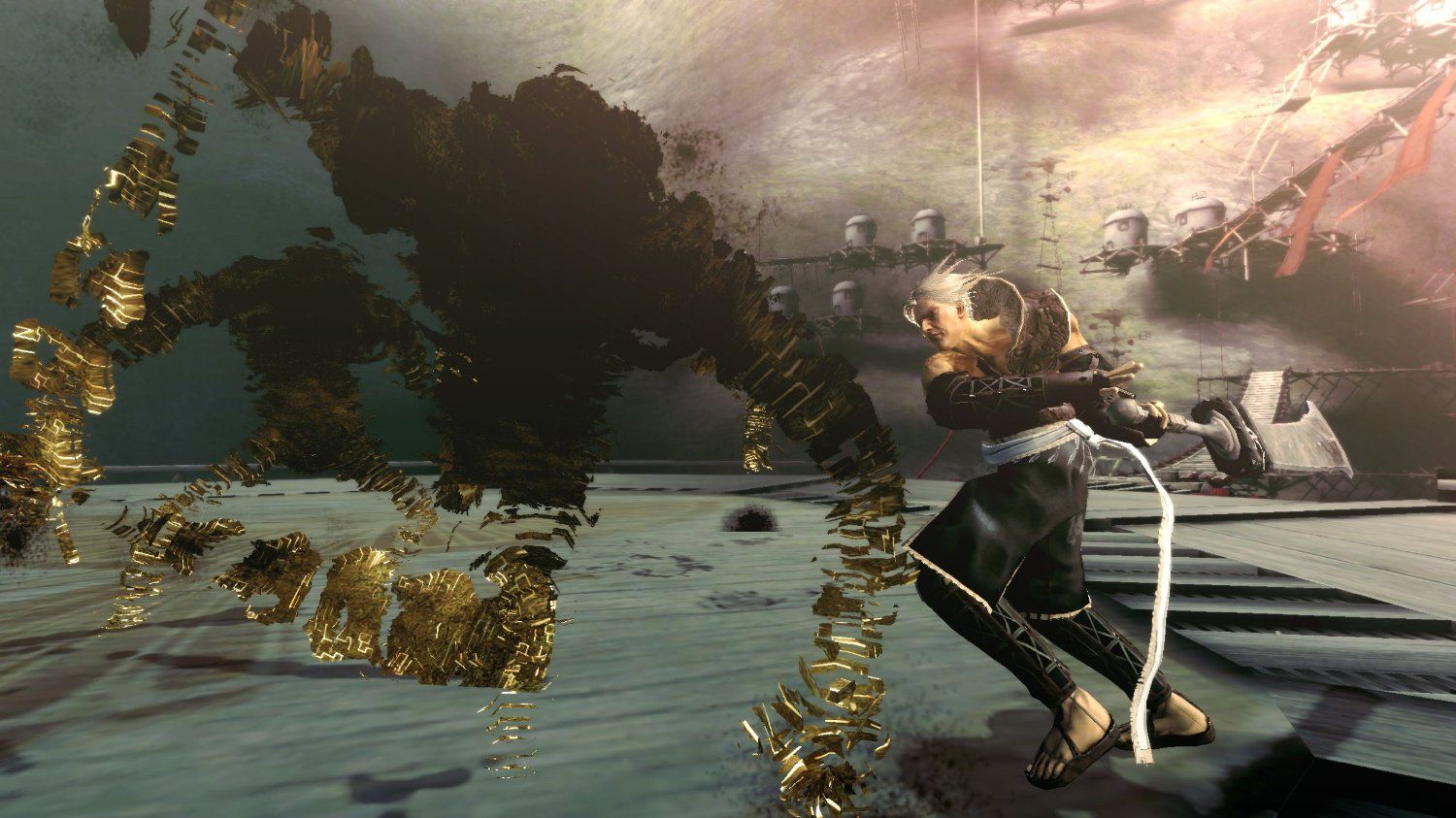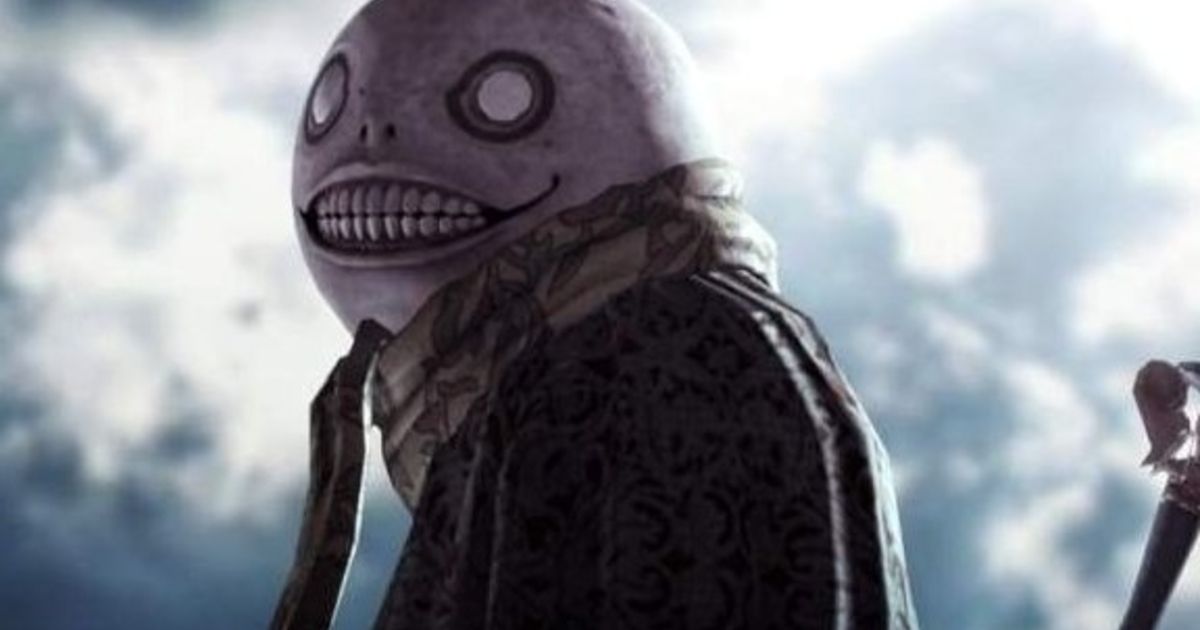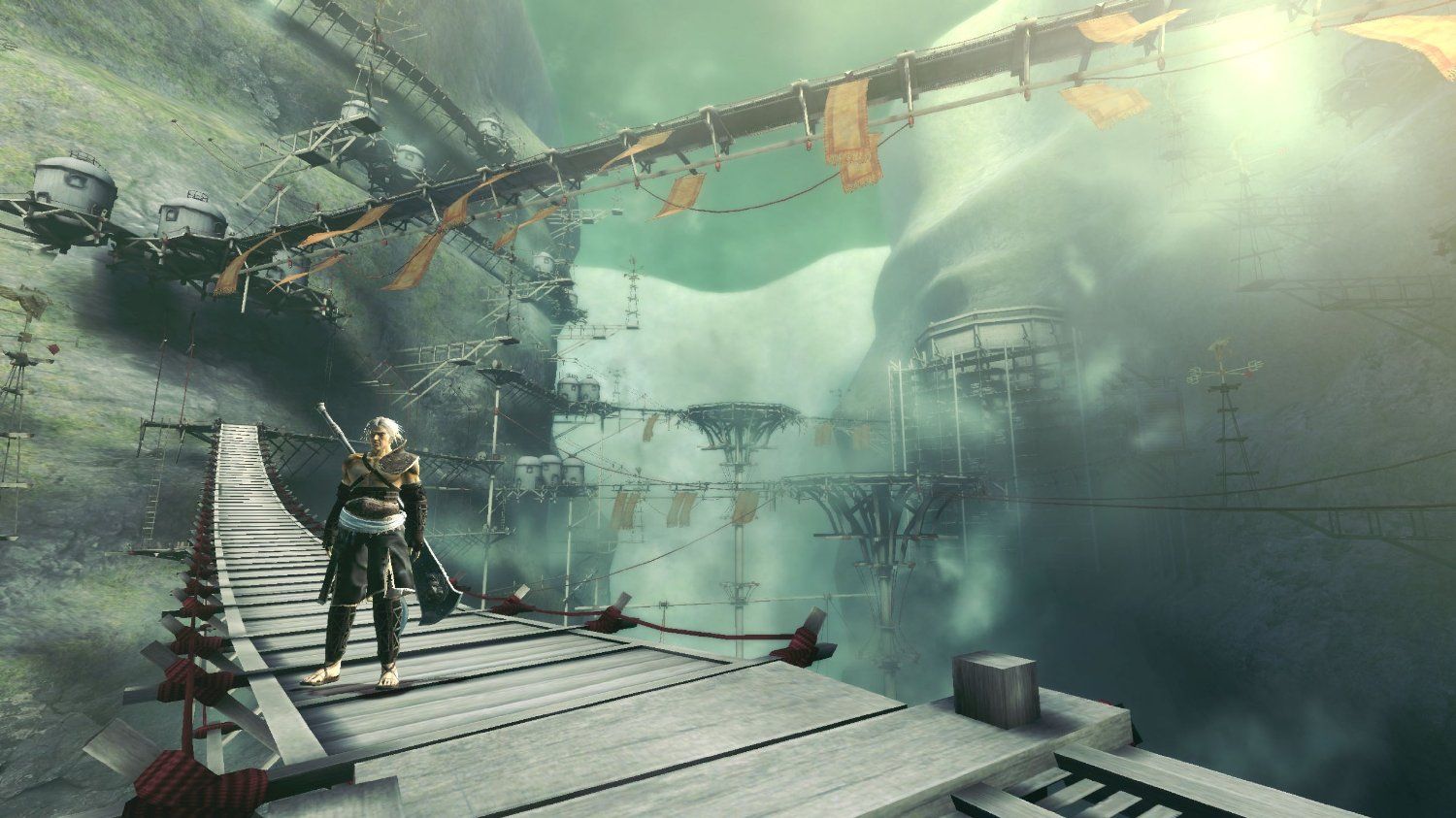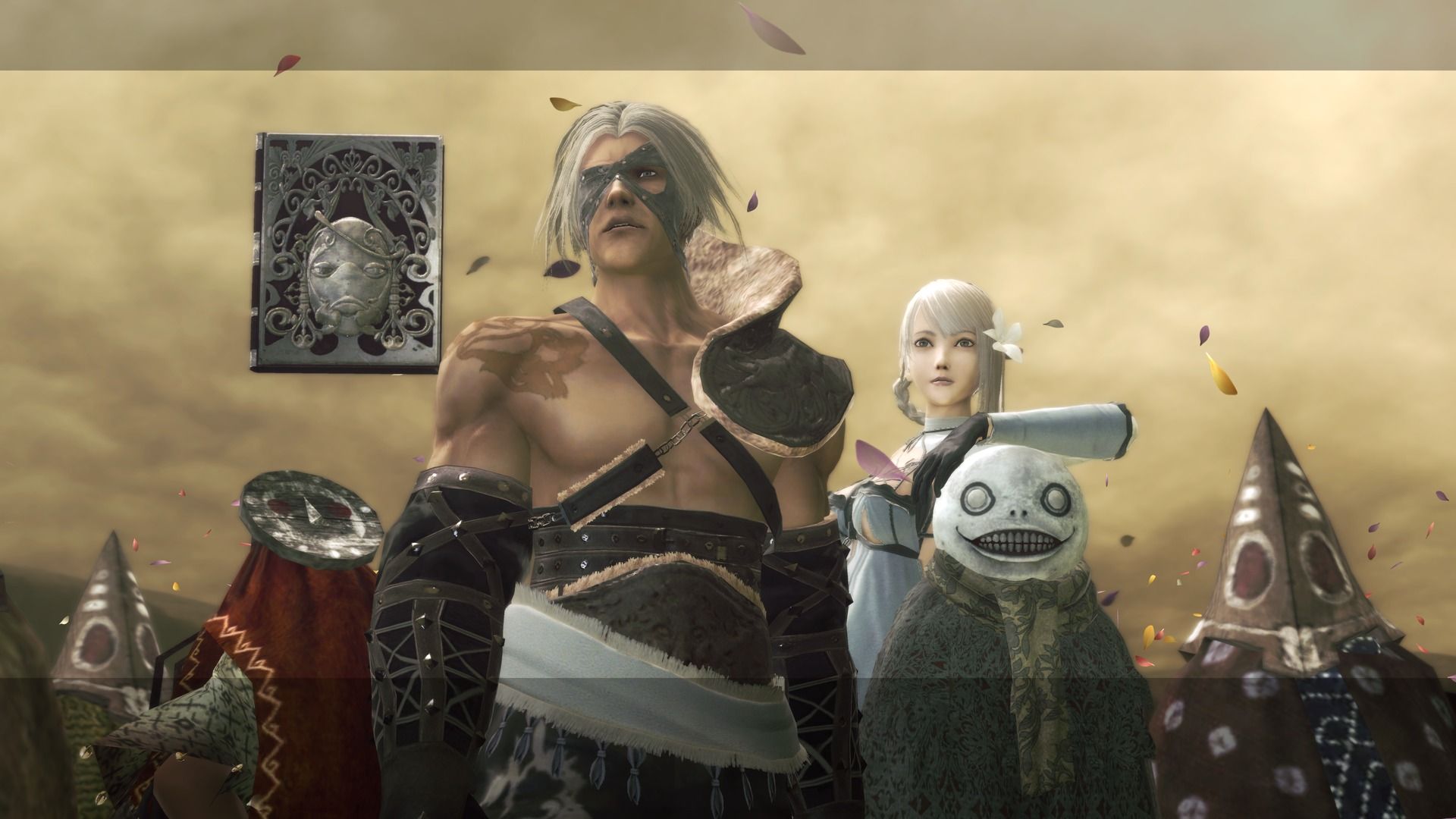Member the games you used to play? We member. The basement at the Hardcore Gamer office has a section known as the Crust Room, with an old grey couch and a big old CRT TV. All the classic systems are down there collecting dust, so in an effort to improve the cleanliness of our work space, we dust off these old consoles every so often and put an old game through its paces, just to make sure everything stays in working order. We even have a beige computer with a floppy disk drive.
NieR: Automata released to critical acclaim and commercial success in 2017, earning several accolades from many outlets including this site’s best game of the year. This title was the sequel to the 2010 Drakengard spinoff Nier, which was played by about six people. The sequel improved on many gameplay mechanics and is hard to argue against it being the superior game but the original Nier didn’t become a cult classic for no reason as there are plenty aspects about this title that makes it a worthwhile game. Nier is a humorous and rather bizarre action RPG with an engrossing and emotionally-charged story.
When Nier was released for PlayStation 3 and Xbox 360 it was met with a mixed critical reception and substandard sales. These criticisms were not unwarranted either, the combat and platforming mechanics of Nier were serviceable but not extraordinary. The graphics might have been considered good if it was a launch title for that console generation. Several of the side quests felt like filler as most of them were pointless and dull busywork. In 2010 most gamers weren't interested in it. I didn't even learn about it until 2013, when a bout of insomnia led me to stumbling across a list of obscure RPGs that are worth playing. Not much about Nier can be gleaned from a paragraph in a top twenty list but something about a wise cracking book made this title stick out and it became a quick addition to my list of games that I need to play.
The thing about Nier is I ended up liking it a lot more than its objective shortcomings would suggest. Nier is essentially average game mechanics mixed with an exceptional story that helps elevate the overall experience to something greater than simply what someone would get based on its gameplay alone. It is one of the stranger games around but that is part of its charm. The dialog brings the characters and world to life and the original score is one of the better game soundtracks out there. It is these areas where Nier excels, and that turns an otherwise average action RPG into one of the most memorable games ever made, at least for the six people who have played it. Beyond this point there are spoilers so if you don't want this game ruined it is advisable you stop here and go play Nier.
Nier takes place after the events of Drakengard's fifth ending. The games begins in the year 2049. Titular protagonist Nier is at a grocery store that looks like it may have seen better days. He is with his sick daughter, Yonah. A swarm of shades descent on them, forcing Nier to fight them off to protect Yonah. After they are vanquished, Yonah seems to be taking a turn for the worse. Fast forward 1312 years into the future and it looks like Nier is set in a traditional medieval times based RPG fantasy. Yonah is with him and she is still infected with the disease known as the black scrawl.
Being the heroic warrior father that he is, Nier sets out on a journey to look for a cure for black scrawl. The first companion he acquires is a talking floating book named Grimoire Weiss. The two have some interesting interactions, but the camaraderie gets much more entertaining when Kainé joins the party as she and Mr. Weiss get along as well as a cobra and mongoose. And then there is Emil, a young boy who wears a blindfold because his gaze turns anyone it catches into stone. All these characters have entertaining personalities that provide a contrast to the tragedy in their story, with Emil's story being especially tragic. Despite the hardships he suffered, he still sings a happy song which won Nier: Automata Hardcore Gamer's Best Soundtrack 2017.
Emil is actually a pretty sweet kid, especially compared to the demeanor of some of Nier's other travel companions. As it turns out, Emil isn't just some weird kid who happened to be able to petrify people with his eyes. He is actually a manufactured weapon, simply known in that context as No. 7 but wears the blindfold because he doesn't want to use his power to cause harm. This is not something he is able to maintain indefinitely as he is forced to petrify Kainé in order to imprison a shade. Sometime after this he has Nier accompany him to the research facility and remembers bits of his childhood.
Emil and twin sister Halua were raised in an orphanage but it was really a research facility. The children were subjected to terrible experiments in attempts to turn one of them into the ultimate weapon, which would be called No. 6. Emil was deemed the perfect candidate for this but Halua volunteered to go in his place because she wanted to spare him from undergoing the terrible transformation that this would require. The researchers did this to Halua, but had other plans for Emil. As No. 7 he was given the power of petrification but this had a much more dire purpose for he was essentially the safeguard should Halua ever go out of control. This eventually happened, and after Halua made this sacrifice to spare Emil, the pain he ends up turning her to stone. Later in the game his form ends being twisted into a new inhuman state which leads to thousands of years of tragedy and loneliness for Emil.
During the course of the game it is revealed that the introductory scene is depicting the final days of the human race. In order to preserve humanity an attempt was made to separate the souls and bodies of humans using Grimoire Noire and Grimoire Weiss. The souls, called Gestalts, were to be reunited with their disease resistant bodies, called Replicants, after the disease died out. Over time the Replicants formed their own identities and cultures while the Gestalts became hostile and aggressive, turning into the shades that the player battles as the main enemy throughout the game.
Nier has four different endings. After the first ending the player has the option of beginning a new game plus that starts at roughly the midpoint of the game. History about Kaine’s traumatic past is revealed, but she is now able to understand Shades which unlocks additional cutscenes in the second playthrough. This was likely drawn from Yoko Taro’s use of the September 11 terrorist attacks as an inspiration for Nier, where he wanted to take a terrible event where both opposing sides believed that they were in the right and show the same event from various perspectives. This is something that would have probably led to controversy if this was a bigger game, but getting past some of the gut reaction histrionics this is part of what made Nier so memorable. Both Nier titles, even though neither of them deal with any actual humans, examine several curiosities of human nature and society.
The third and fourth endings deal with euthanasia and sacrifice respectively. The fourth ending actually forces the player to make a literal sacrifice by deleting their save file, returning the game to the state before it was ever played with one exception: to fully drive home the point that Nier wiped his entire existence away the player will be unable to use the same name for the save file. This is one aspect that I have had conflicted feelings on, and this was likely Yoko Taro’s intent. I’ve never been one to delete saved game files, as impractical as keeping completed save data around might be. Even though I may never play that particular file again it is the record to the time I spent enjoying a game and whatever gaming accomplishments came with it so I hated having my data get deleted. On the other hand, this works on an artistic level by forcing the player to make an actual sacrifice and by symbolizing Nier erasing himself from existence in order to save someone else.
Most of Nier’s gameplay is standard action RPG fair but they throw in a few odd moments to keep things interesting. It’s pretty standard open world exploration with some towns to visit and boss fights that require unique strategies to defeat them. One town is known for having millions of rules on the books with the citizens having all the rules and their appropriate numbers memorized. At some point in the game the player has to complete a little DOS-style text game which comes out of nowhere but its inclusion is rather amusing.
NieR: Automata takes place after ending D of Nier, where Nier sacrifices himself and all data is lost. To answer the question of whether people can enjoy the sequel without playing the original Nier the answer is yes but with caveats. The two games are set about 8500 years apart from each other and deal with different main characters and events. There are certain nods to the original title, however, such as Devola and Popola, and the Lunar Tear quest in NieR: Automata will lack the majority of its emotional impact to those who have not played Nier. Nier was a relatively obscure game during the first couple years of its existence. It did develop a cult following in that time and thanks to the success of NieR: Automata has become a more sought-after title. Its mixed reviews are deserved from any objective standpoint. Average gameplay mechanics and lackluster graphics made it easy to dismiss this title at face value, but those who can get past those shortcomings can find a memorable experience in this hidden gem from the previous consoles.
Want to Member some more old games we love? You can see all our Members here.

